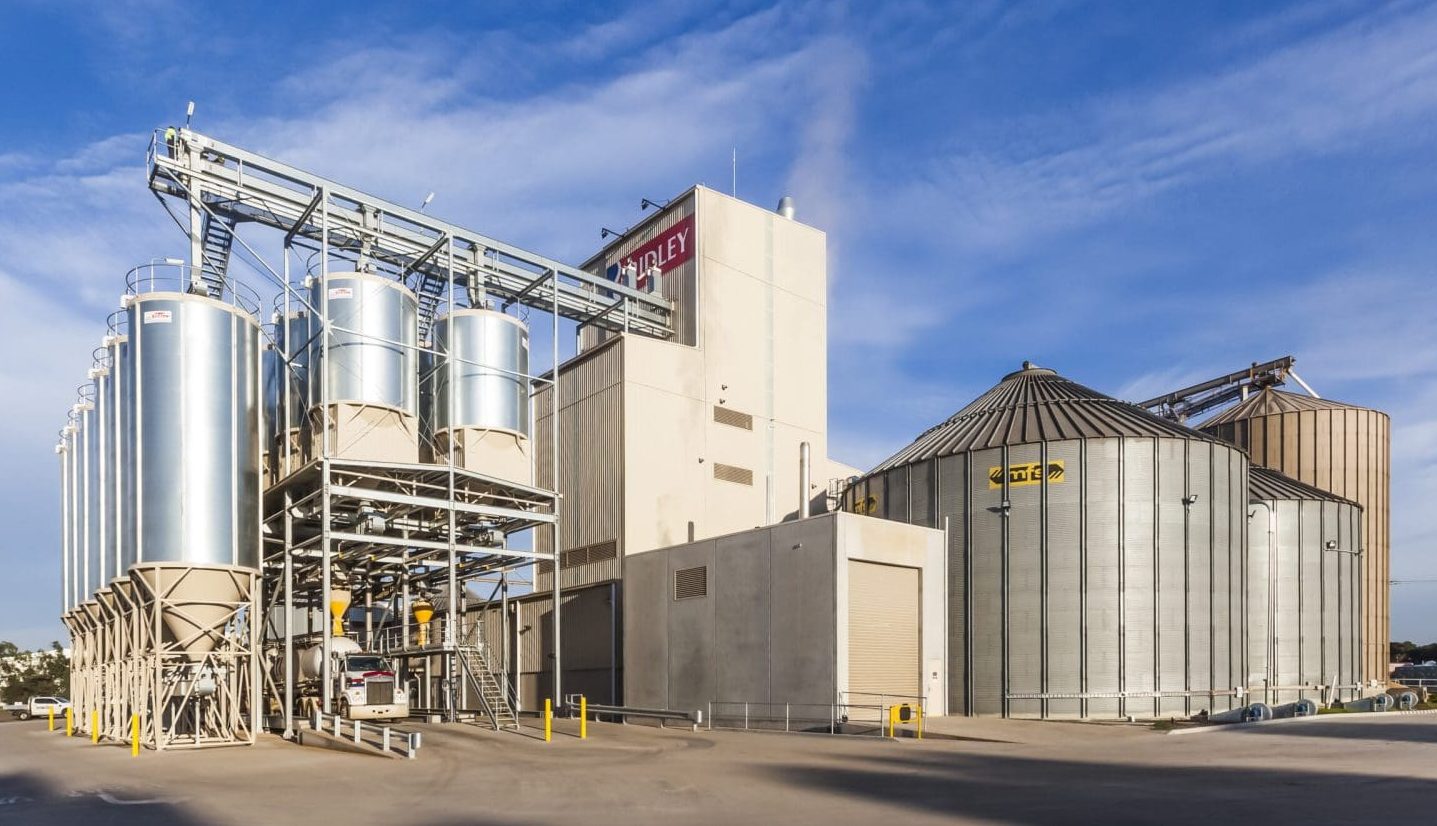
Ridley’s Lara mill is one of 13 owned by the company in eastern and South Australia.
GROWTH in the bulk stockfeeds business is behind a modest increase of 8.8 percent in Ridley Corporation’s earnings for the half year ending December 31.
The animal-nutrition company reported earnings before interest, tax, depreciation and amortisation before individually significant items of $48 million for HY24, up from $41.1M in HY23.
Net profit after tax also grew slightly, from $21M in HY23 to $22.8M in HY24.
The bulk stockfeeds segment contributed $23M to the total EBITDA, a 28.5pc increase on HY23, while the packaged feeds and ingredients business EBITDA of $31.5M was a drop of 4.6pc on the previous corresponding period.
Ridley managing director and chief executive officer Quinton Hildebrand said key drivers of the bulk stockfeeds performance were increased ruminant volumes and improved procurement margins.
He said these factors included: market share gains in the dairy sector; an increase in supplementary feeding in New South Wales and Queensland in the first quarter before widespread rainfall, and improved margins “as we took advantage of the more favourable harvest conditions and acquired more grains from regional distributors and farms”.
Mr Hildebrand said the bulk stockfeeds growth was heavily skewed towards the ruminant segment.
“Volume growth is predominantly around the ruminant side of the business,” Mr Hildebrand said.
“The demand from our poultry customers has been flat and that’s as they work through their production cycles and challenges, so we didn’t get much growth there, albeit we did drive efficiencies and that supported margins.
“It was pretty similar on the pork side, where that sector hasn’t been growing.”
Increased stocks
Ridley chief financial officer Richard Betts said the earlier harvest allowed the company to increase its grain stocks compared to HY23.
“In the previous financial year, the new crop was delayed due to the weather, which meant inventory levels were very low at 31 December 2022, whereas this year, the availability of inventory was more abundant due to the earlier harvest,” Mr Betts said..
“This provided the opportunity to acquire additional stock from regional distributors and direct from farm.
“Whilst this was acquired on shorter terms, it did enable us to improve grain margins.”
Mr Hildebrand said lower sales prices in the ingredient-recovery business, particularly tallow, and the underperformance of aquafeed sales, were behind the disappointing packaged feeds and ingredients business performance.
He said the overall outcome was partially offset by increased volumes in ingredient recovery, improved margins in packaged products, and lower NovaqPro production costs.
Debottlenecking under way
Mr Hildebrand said the company was working through two major debottlenecking projects which would increase efficiencies at its Clifton monogastric feedmill in Queensland and the Pakenham ruminant feedmill in Victoria.
He said the Pakenham project was completed in November, with additional dairy customers already gained in Gippsland and Tasmania.
On track for completion in June, Mr Hildebrand said the Clifton upgrade was “underpinned by a long-term customer contract which allows us to supply their increased demand”.
“We have other debottlenecking projects on the drawing board which our project team is working on, and subject to us getting confidence in the customer offtake and attractive paybacks.
“These projects will form the basis of our FY25 capacity expansions.”
Another milestone for the company, the completion of the Narangba packing facility in December, was expected to create production efficiency and labour savings, and increase access to new segments through smaller pack sizes available from the Brisbane site.
Mr Hildebrand said the recently announced acquisition of Oceania Meat Processors was on track for completion on March 28.
He said the purchase had been “generally well received by customers and suppliers”, and integration planning was currently under way.
Outlook for FY24
Mr Hildebrand said the company expected macro-economic conditions to be challenging in the short-term and was working to “reduce the adverse impact of inflationary pressures and changes in commodity cycles”.
“Ridley expects ongoing earnings growth in the second half from premiumisation in the Packaged Feeds and Ingredients segment, including a contribution from the planned acquisition of OMP, and leveraging the flywheel effects of scale in the Bulk Stockfeeds segment.”
Ridley is Australia’s largest animal-feed manufacturer and one of its biggest grain users.
The company has facilities located in South Australia, Vic, NSW and Qld including an extrusion plant, supplements plant, and 13 feedmills.
It also operates two ingredient recovery plants in Vic and NSW, where they produce protein meals and animal fats.

HAVE YOUR SAY